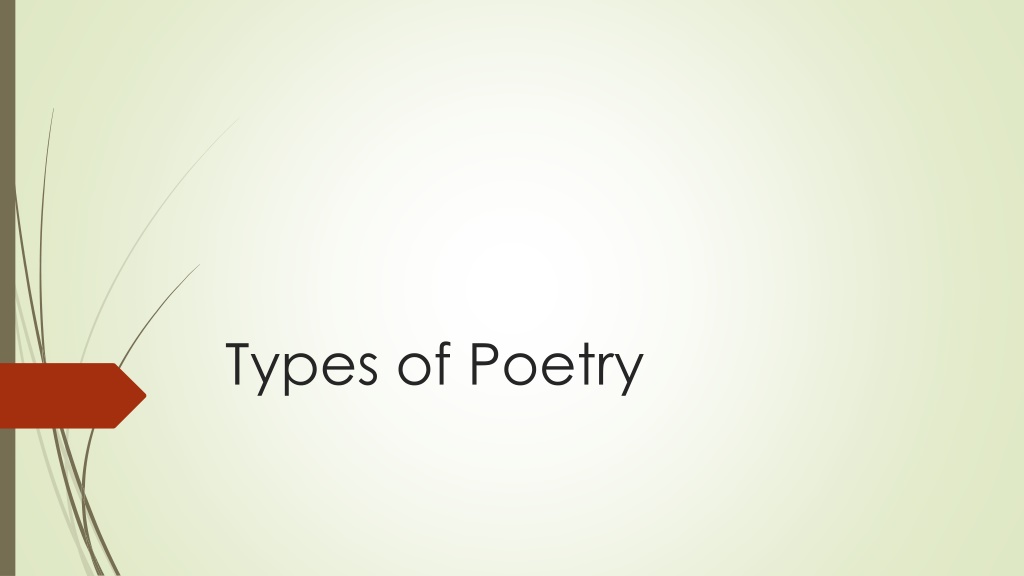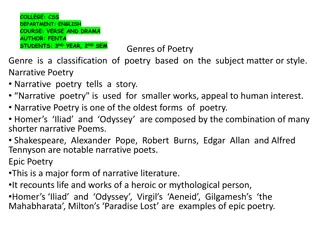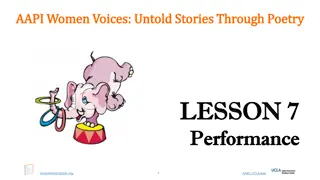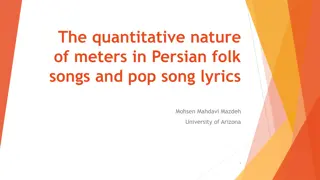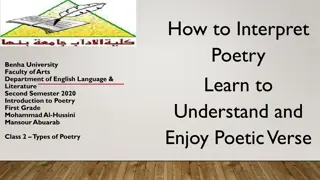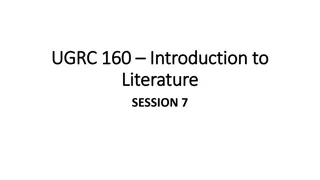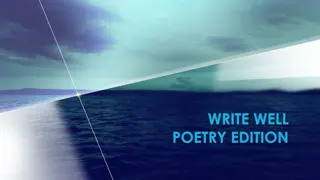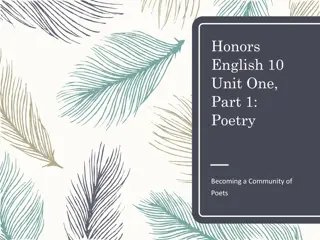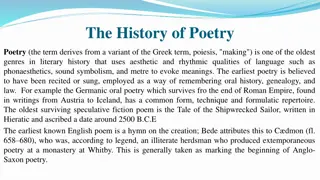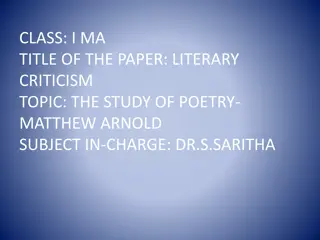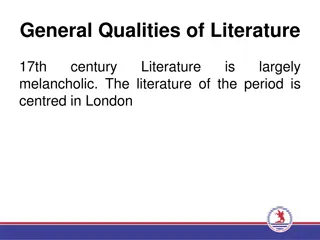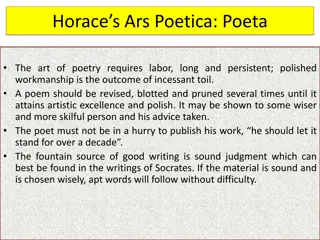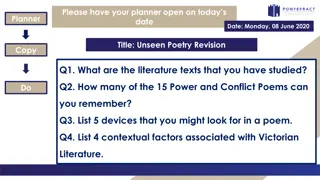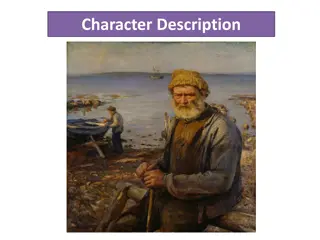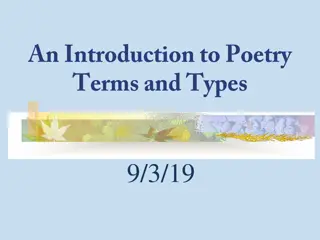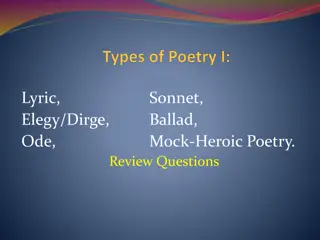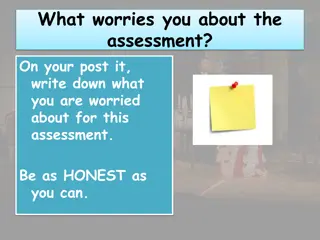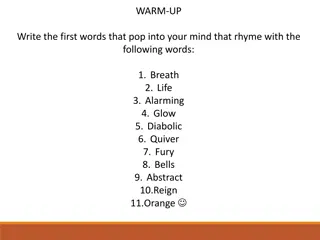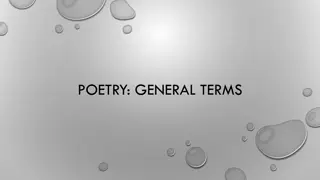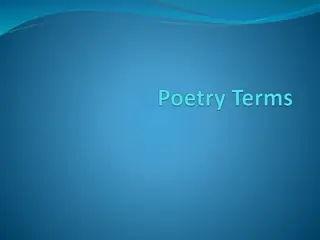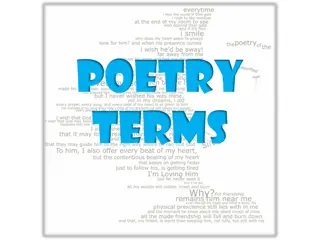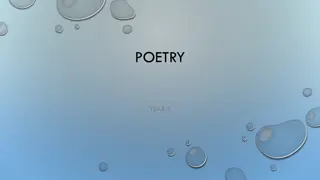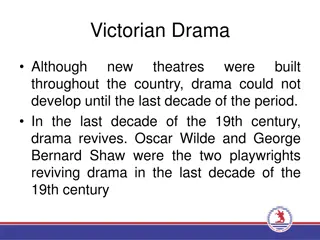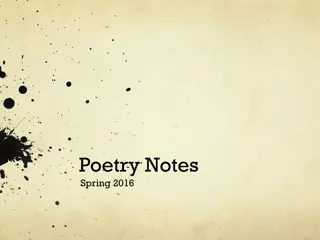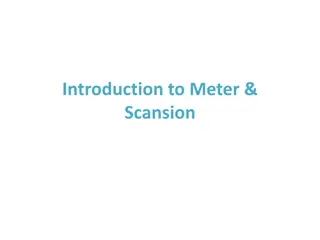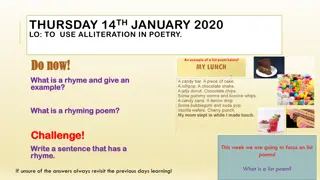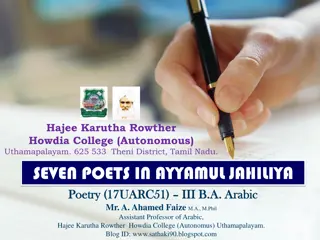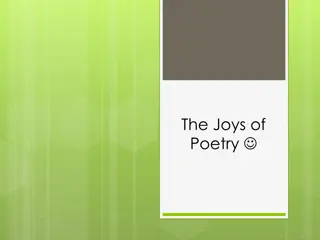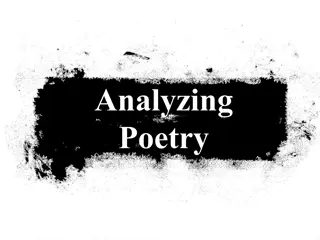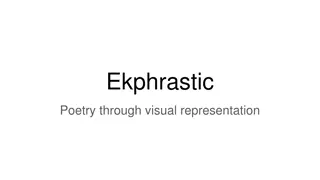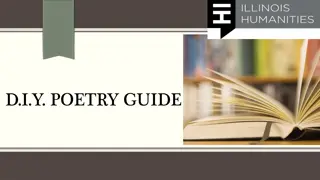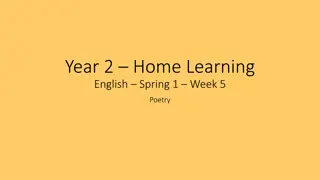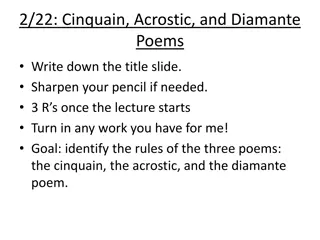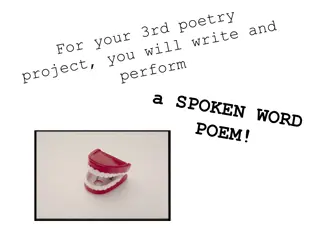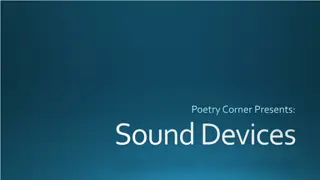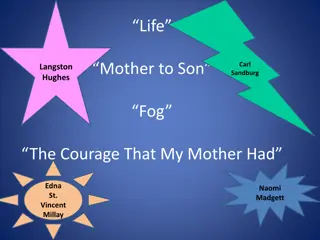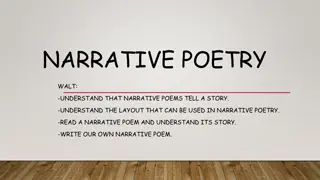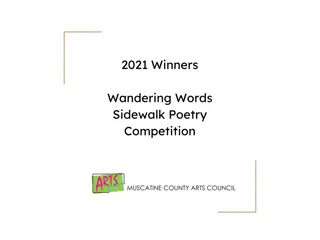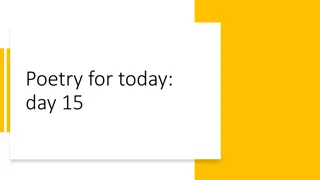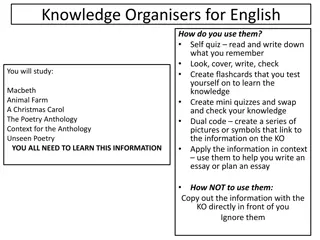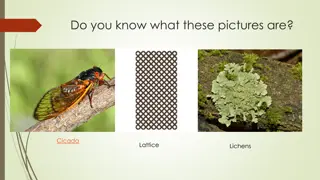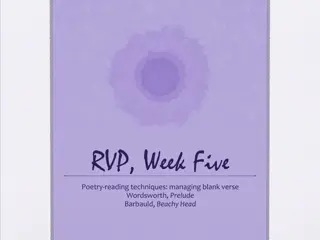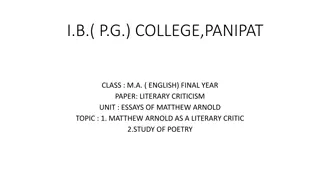Explore Various Types of Poetry with Descriptions and Visuals
Discover different types of poetry, from traditional forms like Haiku, Blank Verse, and Ballad to modern styles like Free Verse and Limerick. Learn about their structures, purposes, and prominent examples, accompanied by visual representations for better understanding.
Download Presentation

Please find below an Image/Link to download the presentation.
The content on the website is provided AS IS for your information and personal use only. It may not be sold, licensed, or shared on other websites without obtaining consent from the author. Download presentation by click this link. If you encounter any issues during the download, it is possible that the publisher has removed the file from their server.
E N D
Presentation Transcript
Haiku Originally Japanese 3 line verse form 1stand 3rdlines have 5 syllables The 2ndline has 7 syllables Purpose: present a single vivid emotion by means of images from nature
Free Verse Poetry not written in regular rhythmical patterns Purpose: capture the rhythms of speech Main form of contemporary poetry
Blank Verse Poetry written in unrhymed iambic pentameter lines Iambic Pentameter: Each line has 5 stressed and 5 unstressed syllables Widely used by Elizabethan writers like William Shakespeare
Ballad A songlike poem that tells a story Most are written in 4-6 line stanzas and have regular rhythms and rhyme schemes Often features a refrain Refrain: regularly repeated line or group of lines
Epic A long narrative poem about the deeds of gods or heroes Ex: Homer s The Odyssey
Sonnet 14 lines Usually written in rhymed iambic pentameter The most famous is the English, or Shakespearean, sonnet Consists of 3 quatrains and 1 couplet Quatrain: 4-line stanza Couplet: 2 line stanza
Limerick Consists of 5 lines: 3 long and 2 short Rhyme Scheme: AABBA Humorous and frequently inappropriate Popularized by Edward Lear in the 19thcentury
